- | 8:00 am
This unusual tower was shaped by the rays of the sun
A building custom designed for worshipping the sun.

On the edge of a beach in the northern Chinese city of Yantai, a peculiar and highly specific building is nearing completion. The oceanfront structure is 160 feet high and shaped a bit like a cross section of a conical cooling tower in a massive energy plant.
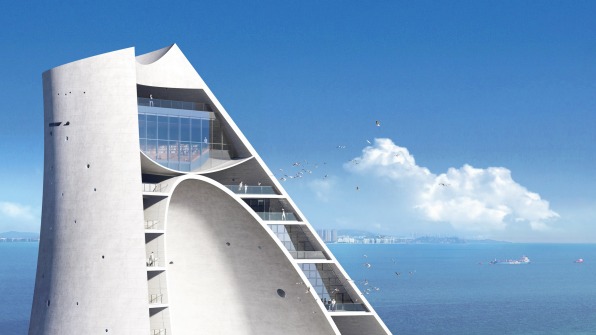
Designed by the Beijing-based firm Open Architecture, the Yantai Sun Tower is expected to be a new icon for what is one of China’s most eastern coastal cities. Famed for its sunrises over the Yellow Sea, Yantai has been known for centuries as a place where people have gone to worship the sun. The new building was commissioned by the city as a library, exhibition space, café, semi-outdoor theater, and events center.
Open Architecture leaned toward creating what founding partners Hu Li and Wenjing Huang call “a more purposeful structure, something that would evoke the ancient rituals of nature worship while providing much-needed cultural facilities in the newly urbanized district.”
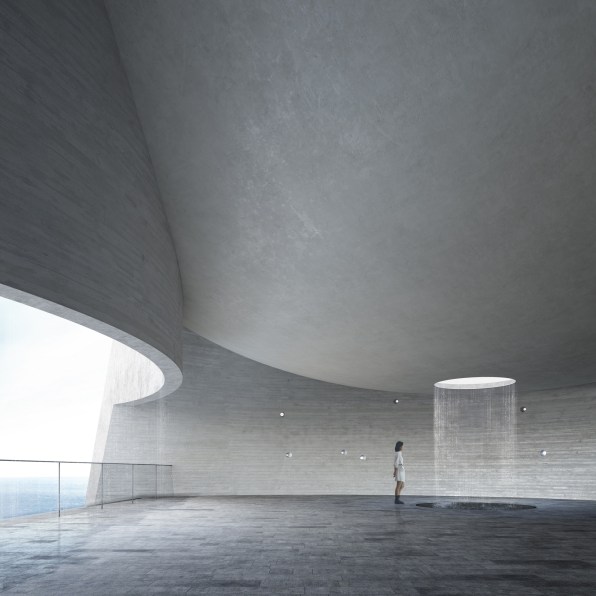
The building revives the ancient concept of sun worship while also using the geometry of the sun’s path throughout the year to guide its design. “The building’s form was sculpted by sunlight,” Li and Huang tell Fast Company by email.
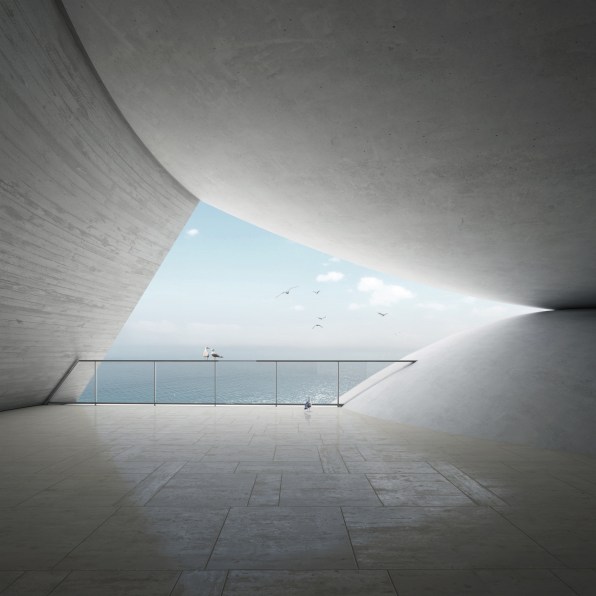
They mean this in many ways. The northern edge of the building’s outer shell is parallel to the noon sunlight of the equinoxes. On the summer solstice, the sun’s rays line up with the building’s eastern edge at 7 a.m., and with the edge of the circular roof at midday. The main-entrance tunnel aligns with the sunset on the winter solstice. And an outdoor theater space is oriented to look out on the sunrise of the summer solstice. With hundreds of seats, it is intended to be a prime collective viewing space for the annual celestial event.

Sun-tracking is also built into the grounds of the tower, with a special channel of water carved into the surrounding plaza along a precise geometry. Like the meridian lines that track the sun’s connection to the zodiac in the floors of some centuries-old cathedrals, the waterline shows the path of the building’s shadow on the equinoxes.
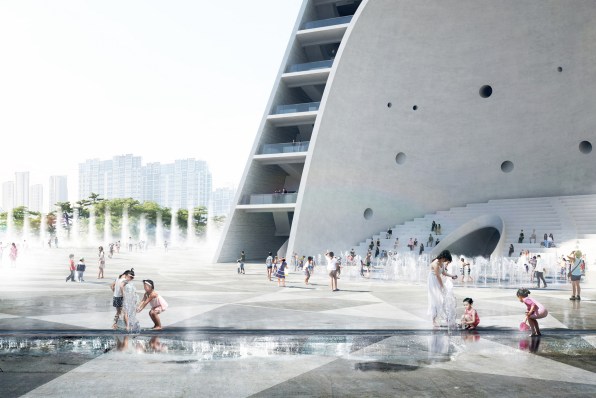
Though sun worship dates back thousands of years and exists in cultures around the world, the building’s designers say it is not intended for rituals but for a broader range of natural and cultural experiences.
“Rather than sun worshipping in its literal sense, it is a cultural building where people encounter natural phenomena while moving through the whole structure, being immersed in exhibitions and activities,” Li and Huang write.
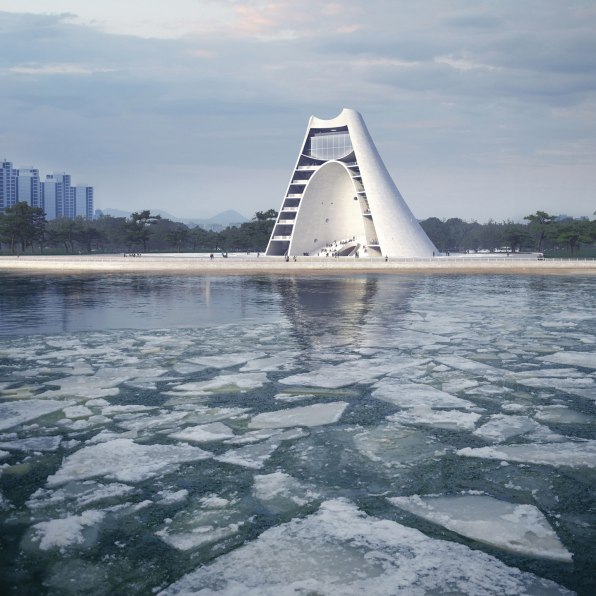
The sun isn’t the only natural force shaping the structure. It was also designed with an open inner parabolic shell that is intended to amplify the sound of the ocean’s crashing waves. As Li and Huang put it, “We hope this building helps to reconnect people back to the ancient reverence for nature.”





































